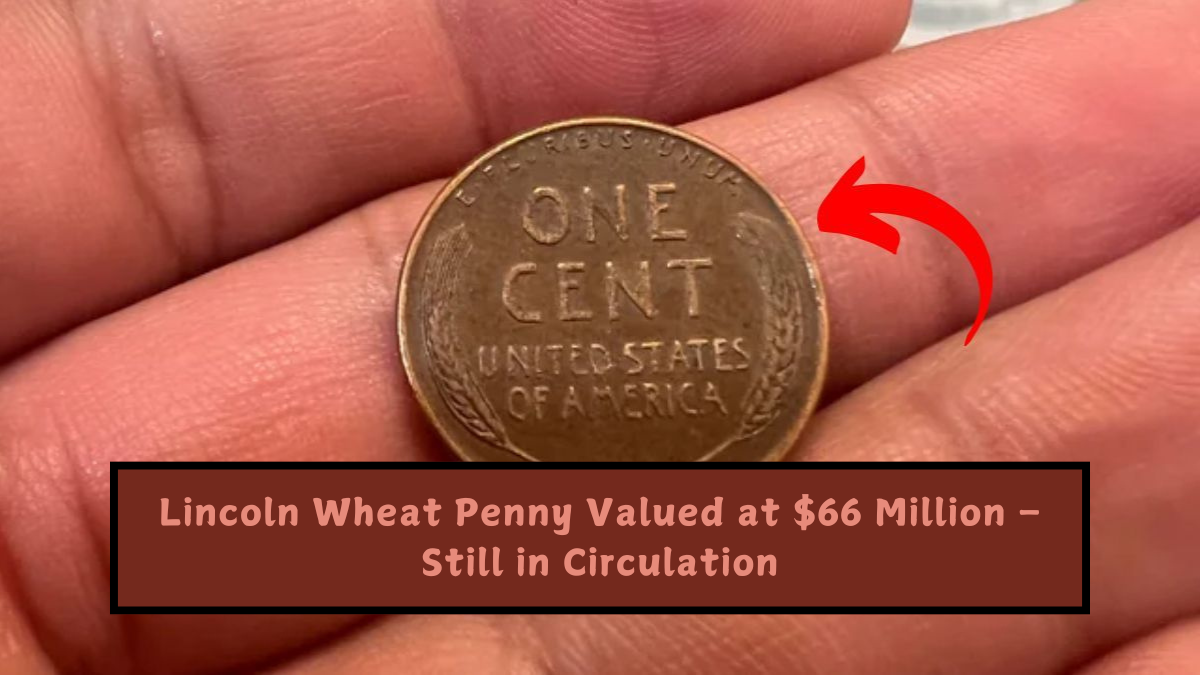The Lincoln Wheat Penny, first minted in 1909 to commemorate President Abraham Lincoln’s 100th birthday, is one of the most iconic coins in American history. Designed by Victor David Brenner, the penny features a portrait of Lincoln on the obverse (front) and two stalks of wheat on the reverse (back), symbolizing America’s agricultural roots.
While most Lincoln Wheat Pennies are worth their face value of one cent, a few rare versions have skyrocketed in value, with one particular specimen valued at an astonishing $66 million. This blog delves into the history, significance, and the extraordinary rarity of this coin—what makes it so valuable, and whether you might still have a chance to find one in circulation.
The History of the Lincoln Wheat Penny
The Lincoln Wheat Penny was produced by the U.S. Mint from 1909 to 1958. This was the first coin in U.S. history to feature a real person, replacing the allegorical figure of Liberty. Designed by Victor David Brenner, the obverse side of the coin bears the profile of Abraham Lincoln, while the reverse showcases two wheat stalks, symbolizing prosperity and agricultural strength.
It quickly became a popular and staple coin in American currency. The penny was made for nearly five decades, and during that time, billions were circulated across the country.
The Rare Penny Worth $66 Million
The coin that has captured the world’s attention is the 1943-D Bronze Cent. During World War II, the U.S. Mint faced shortages of copper, so it switched to producing pennies with zinc-coated steel. However, a small number of leftover bronze planchets from 1942 were accidentally used in the Denver Mint during 1943. This resulted in a rare minting error. Only one known example of the 1943-D Bronze Cent exists, and its incredible rarity has made it one of the most valuable coins ever discovered.
The coin fetched a record-breaking $66 million at auction, making it one of the most sought-after collectibles in history. The uniqueness of this penny, combined with its historical context, makes it an absolute treasure for numismatists (coin collectors).
Also Read: The Lincoln Wheat Penny Valued at $990K, Still in Circulation
Why is it Still in Circulation?
Despite the monumental value of the 1943-D Bronze Cent, there is always a chance that similar coins could still be in circulation. Coins often change hands countless times over the years, and some rare coins may escape notice simply because they look similar to their common counterparts. The 1943-D Bronze Cent, for instance, closely resembles the regular steel pennies from that era, making it easy to overlook unless closely examined.
How to Identify the 1943-D Bronze Cent
If you want to try your luck at finding this legendary coin, here are some tips to help you identify it:
- Date and Mintmark: Look for the year “1943” on the obverse side of the penny, along with a small “D” mintmark below the date, indicating it was minted in Denver.
- Material: A bronze penny will have a coppery color, unlike the silvery appearance of steel pennies.
- Magnet Test: Bronze pennies are not magnetic, but steel pennies are. You can use a small magnet to check the coin.
- Weight: A bronze penny weighs about 3.11 grams, whereas a steel penny weighs 2.7 grams.
If you suspect you have a 1943-D Bronze Cent, it’s crucial to consult a professional numismatist or coin grading service to confirm its authenticity.
What Makes the 1943-D Bronze Cent So Valuable?
The staggering value of the 1943-D Bronze Cent can be attributed to several key factors:
- Rarity: With only one known specimen in existence, this coin is incredibly rare.
- Historical Significance: As a wartime error, it represents a unique moment in U.S. history, adding historical weight to its value.
- Collector Demand: Coins with such fascinating stories and rare origins are highly desirable among collectors and investors.
- Condition: Coins in mint condition, like the known 1943-D Bronze Cent, fetch significantly higher prices.
Other Valuable Lincoln Wheat Pennies
While the 1943-D Bronze Cent may be the most famous, there are other Lincoln Wheat Pennies that hold significant value:
- 1909-S VDB Penny: This penny, featuring the initials of designer Victor David Brenner, is highly sought after due to its low mintage. It can be worth thousands of dollars.
- 1922 No D Penny: A minting error where the “D” mintmark is missing makes this penny incredibly valuable.
- 1955 Double Die Penny: Known for its doubled design, this error coin can fetch thousands of dollars.
The Legacy of the Lincoln Wheat Penny
A relic of American history, the Lincoln Wheat Penny is more than just a coin. From its initial release in 1909 to its eventual replacement by the Lincoln Memorial design in 1959, this penny has left a lasting legacy. It’s a favorite among collectors, not only for its unique design but also for the stories behind each coin—whether they’re regular pennies in circulation or rare finds waiting to be discovered.
Conclusion
The Lincoln Wheat Penny valued at $66 million serves as a testament to the enduring appeal of rare coins. While the chances of finding one are slim, every old penny is worth a second look. Hidden treasures can be found in the most unexpected places—perhaps even in your pocket change.
The next time you sift through your coins, you might just uncover a piece of history that could change your life.
FAQs
How rare is the 1943-D Bronze Cent?
The 1943-D Bronze Cent is one of the rarest coins in American history, with only one known specimen in existence.
What should I do if I suspect I have a 1943-D Bronze Cent?
If you suspect you have this rare coin, consult a professional numismatist or coin grading service to confirm its authenticity.
Why do Lincoln Wheat Pennies have such high values?
Lincoln Wheat Pennies are highly valued due to their rarity, historical significance, condition, and collector demand.

